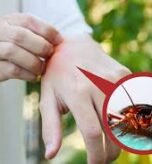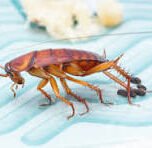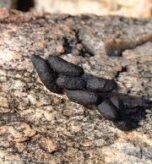Introduction
If you’ve noticed unusual droppings around your yard or attic, you may be dealing with an opossum. Opossum feces identification is crucial for homeowners because it helps confirm an infestation, prevents exposure to harmful diseases, and guides safe cleanup practices. In this guide, we’ll cover how to recognize opossum poop, the dangers it carries, and effective methods for managing and preventing future problems.
What Does Opossum Poop Look Like?
Correct opossum feces identification begins with recognizing their unique characteristics.
Size and Shape
Opossum droppings are typically 2 to 3 inches long with smooth sides and pointed ends. They may curl slightly, resembling the shape of a dog’s poop but usually darker and narrower.
Color and Texture
Fresh opossum feces appear dark brown to black and may glisten due to moisture. As they dry, the droppings turn grayish or chalky.
Common Locations
You’ll most often find opossum poop:
- Near garbage bins
- Around garden areas
- Inside attics or crawl spaces
- Along fences or under decks
➡️ For comparison, check our guide on groundhog poop identification to avoid confusion with other wildlife.
Health Risks Linked to Opossum Feces
While opossums may help control pests like ticks, their droppings present serious hazards.
Disease Transmission
- Leptospirosis: Causes fever, muscle aches, and kidney damage.
- Salmonella: Leads to stomach cramps, diarrhea, and fever.
- Coccidiosis: Dangerous for pets, especially young cats and dogs.
Parasites
Opossum feces often contain roundworm eggs, fleas, and ticks. These parasites can spread diseases like Lyme disease and Rocky Mountain Spotted Fever.
Airborne Risks
When droppings dry out, particles can become airborne. Inhaling them may trigger asthma or other respiratory problems.
👉 If you suspect exposure, consult a local health department (CDC: Zoonotic Diseases) for safety guidelines.
Safe Cleanup of Opossum Droppings
Safety Precautions
- Always wear gloves, a mask, and protective clothing.
- Avoid sweeping or vacuuming dry droppings to reduce airborne particles.
Cleaning Method
- Spray droppings with a disinfectant or diluted bleach solution.
- Use a shovel or scoop to collect feces.
- Seal waste in a plastic bag and dispose of it in a secure trash bin.
- Disinfect the contaminated area with eco-friendly cleaners such as vinegar.
➡️ For detailed sanitation steps, see our guide on safe animal waste cleanup.
Preventing Opossums from Returning
Secure Food Sources
Keep garbage cans tightly sealed and pet food indoors.
Block Entry Points
Seal attic vents, crawl spaces, and gaps under decks to prevent nesting.
Install Fencing
A sturdy fence at least 4 feet high can discourage opossums from entering your garden.
Professional Wildlife Control
If you notice heavy infestation, consider hiring a licensed wildlife removal service. They follow humane methods and ensure your home is fully protected.




